Notice: Undefined variable: page in /home/vrxdg1855sn3/public_html/wp-content/themes/72tree/content.php on line 15
Notice: Trying to get property 'ID' of non-object in /home/vrxdg1855sn3/public_html/wp-content/themes/72tree/content.php on line 15
9 Common Tree Health Problems and Solutions
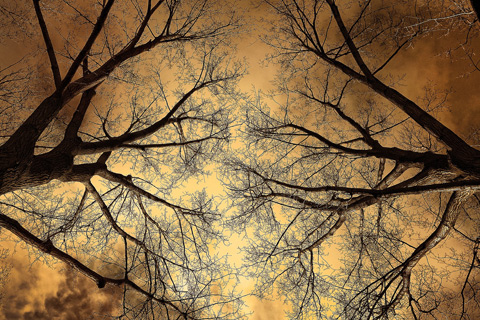
Trees get sick. Like any other living organism, a tree can fall ill for various reasons. If left to its own devices, it can eventually fall causing catastrophic damages.
When an otherwise healthy tree shows signs of illness or infestation, you must take action by eliminating the cause or calling on a certified arborist to evaluate the tree and offer a course of action.
The team of arborists at 72tree.com prepared a comprehensive list of 9 common tree health problems and their solutions.
Weather and Tree Health
Trees are affected by inconsistent weather patterns. The following demonstrates how weather impacts trees and how you can help them remain healthy.
1 – Drought:
One of the most common ailments of trees, symptoms of drought can be tricky. Sometimes, the signs won’t appear until as much as a year after the damage has been done. Those symptoms include:
•Drooping, wilting, and yellowing of leaves.
•Premature needle or leaf drop.
•Pronounced dieback.
•Thinning of the canopy.
•Deep cracks in the bark.
•Necrosis of leaves or browning of needles.
•Death of the tree.
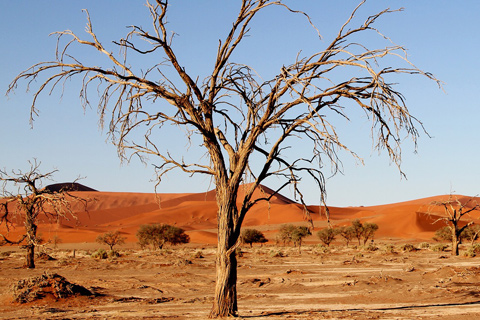
Solution 1 – For planting new trees, make sure they are appropriate for the USDA Hardiness Zone in which you are located. If your area experiences occasional or frequent droughts, seek drought-resistant species.
Solution 2 – Water your trees regularly. New trees will require a deep watering once a week for the first two years (to establish its roots). In addition to watering, add a 3-inch layer of organic mulch around the tree to help the soil retain its moisture.
After two years and through its adult life, trees are very capable of finding water sources. However, throughout dry summer months and near the end of fall, weekly deep watering and mulching will help prevent drought problems.
Solution 3 – Prune back all cracked, dead or weakened tissue. Without pruning these troubled areas, the tree will become vulnerable to infection and infestation. Call on an arborist when pruning removes more than 25% of the tree’s canopy or mass. They can assess the tree and offer a course of action.
2 – Winter Burn:
Also known as desiccation, winter burn occurs primarily in evergreens and causes a discoloration of the foliage. Effects of winter burn are more pronounced where the tree is exposed to the sun and wind. This affliction requires the presence of the following three factors:
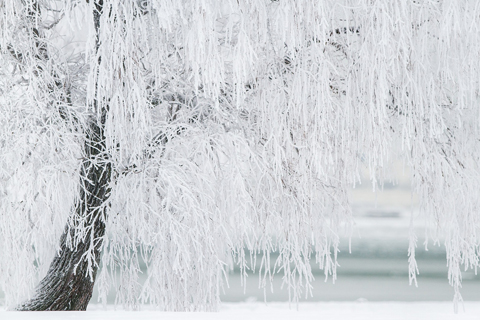
•Freezing temperatures
•Dry soil
•Wind
Solution – Provide your trees with weekly deep waterings through the end of fall and beginning of winter (before the ground freezes) and mulch the area of the root zone for the soil to retain moisture.
For trees that are highly exposed to the wind and sun, wrapping them with burlap will provide an effective barrier which can be removed as temperatures rise.
3 – Improper Pruning, Trimming, and Cutting:
There is a right way, and a right time to perform tree pruning, cutting, or trimming. When performed improperly, the tree may be left exposed to infection and infestation. When done at the wrong time, new growth may not have enough time to adapt before winter, further stressing the tree.
Solution – Know when to prune. Depending on the species of your tree, it may be better to prune in early spring, late fall, or even in the summer months. Use proper pruning or cutting methods when removing limbs, branches, or stems.
Watch this video to learn more about proper pruning techniques.
Tree Insect Infestation
For the most part, healthy trees can stave off insect infestations. However, when a tree’s health is weakened, or there is an increase in the insect population, no tree is off limits.
4 – Insects on Leaves and Bark:
Insects such as aphids, inchworms, bagworms, spider mites, lace bugs, and tree scale are common and relatively easy to manage.
Solution – Apply insecticidal soap, neem oil, or a horticultural oil directly on the area of the infestation.
5 – Boring Insects:
Insects such as the Emerald Ash Borer, Japanese Beetle, Southern Pine Beetle, and Ambrosia Beetle are more complicated to control. You can identify boring insect activity by seeing “sawdust” from their boring activity and the entry hole they create when entering the tree.
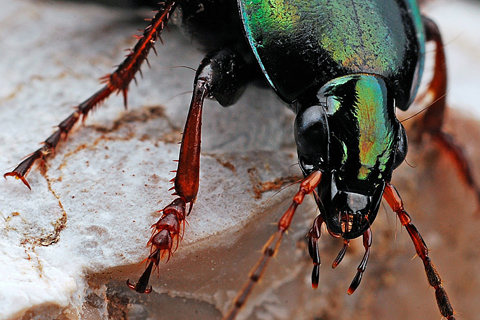
Note: Do not inject insecticides, poisons, or other substances into boring insect entry holes. The chemical may end up further damaging the tree leaving it more susceptible to infestation and death.
Solution 1 – Prune back branches and stems that have been infested and destroy them to prevent further spreading. If more than 25% of the tree’s foliage or mass must be removed, seek the assistance of a certified arborist.
Solution 2 – When the infestation is in the trunk of the tree, call an arborist to evaluate the damage and determine a safe approach to halting the infestation.
Solution 3 – Prevent infestations by keeping your trees healthy. When you hear about an outbreak in your area, treat your trees with a bark insecticidal spray to deter the insects from making your tree its host.
Tree Fungal Diseases
Most fungal diseases make their way into a tree through the roots and open wounds. Once a tree is widely infected, it becomes challenging to control the fungi and will often result in the removal of the tree.
6 – Fungal Infection (internal)
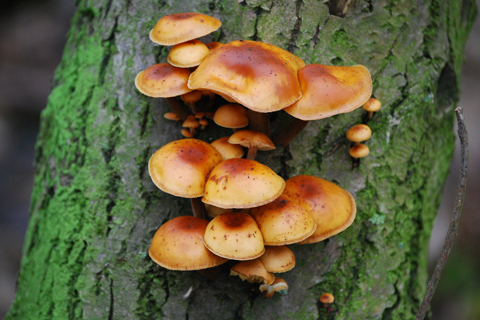
The most alarming sign of fungal trouble is when mushrooms grow on the trunk or branches. Since they require decaying matter to develop, there is a serious issue at play.
Note: The introduction of herbicides to a wounded tree or beneath the bark will only serve to accelerate the death of the tree.
Solution 1 – Prune back and destroy affected foliage, limbs, and branches. Again, when more than 25% of the tree’s foliage or mass must be removed, seek the assistance of a certified arborist. The removal of the tree may be the only way to keep your other trees from being infected.
Solution 2 – Properly prune your healthy trees (or have them pruned) to keep them healthy. A poorly pruned tree is more susceptible to both insect infestation and fungal disease.
7 – Fungal Infection (external)
The wind, birds or insects often carry spores of fungi and pathogens from tree to tree. Cankers, fire blight, rust disease, powdery mildew, and many others are common in the spring and summertime.
Solution – Carefully prune back and destroy affected foliage and apply a fungicidal spray to the affected and surrounding areas. Surrounding trees and shrubs should all undergo treatment as well.
Watch this video to learn about pathogens such as fire blight and cankers which affect tree bark and foliage.
Tree Problems Caused by People and Machinery
All of the threats mentioned above aside, people pose the most significant threat to a tree’s livelihood either by lack of knowledge or accident.
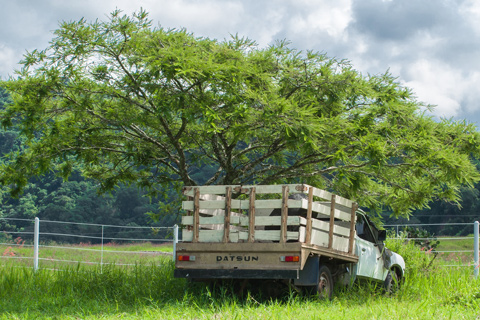
8 – Soil Compaction:
The land that surrounds a tree (especially under its canopy) contains the majority of the roots that draw water for the tree. These roots grow within the top 12 to 18 inches of soil. When this area is compacted, these roots suffocate and die, severely weakening the tree.
Trees compromised by soil compaction are at a heightened risk of toppling in a storm or severe weather event, as their roots are no longer effectively able to anchor them to the ground. Many times, no storm is required, the tree will eventually succumb to its own weight and fall on its own.
Solution – Never drive or park any vehicles underneath a tree’s canopy. Likewise, never store heavy equipment, or erect tool sheds under a tree.
In most municipalities nationwide, tree protection ordinances mandate that protective barriers be placed around trees on construction sites to deter such activities.
The majority of those same ordinances impose heavy fines and replanting requirements known as a recompense for damaged or removed trees.
9 – Lawn Mowers, Motorized Equipment, and Bark Damage:
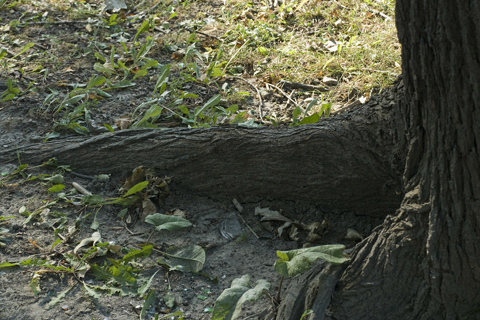
Below the bark of a tree and outer layer of roots, there is a thin layer of cells called the “phloem” which is the conduit for nutrients traveling up and down the tree.
When a tree’s bark is damaged, not only is the tree susceptible to infection and infestation, that flow of nutrients is interrupted and if the damage is around the majority or entirety of the trunk, the tree will be girdled and die.
Solution 1 – Do not allow lawn mowers and other equipment to damage protruding roots or the bark of the tree.
Solution 2 – For protruding roots, either raise the ground level to bury them, or carefully prune them. If you choose to prune the roots, call on a tree professional for detailed instruction or to do the job. Just cutting them out may result in the decline of the tree’s health and its death.
Solution 3 – If the bark of a tree is dried, cracked, or knocked loose, DO NOT remove it. Call an arborist to evaluate the tree’s situation.
Healthy Trees and Arborists
All arborists would agree that healthy, well cared for trees are capable of resisting most infestations and illnesses on their own. However, when a tree does present signs of trouble, knowing what to do can mean the difference between life and death for the tree.
Whether the troubles come from weather, insect, fungi, or people, the solutions are usually simple when detected and treated early. In many cases, to prevent the spreading of a pathogen or the demise of the tree, a certified arborist should be called in to assess the situation and determine a safe course of action.
When your trees show signs of trouble, doing nothing or hesitating to correct the problem may result in the decline of the tree’s health or even its abrupt death.
Sources:
https://www.treesaregood.org/treeowner/planthealthcare
http://www.missouribotanicalgarden.org/gardens-gardening/your-garden/help-for-the-home-gardener/advice-tips-resources/pests-and-problems/environmental/winter-injury/desiccation-or-winter-burn.aspx
https://www.arborday.org/trees/health/issues.cfm
Notice: Undefined variable: page in /home/vrxdg1855sn3/public_html/wp-content/themes/72tree/content.php on line 15
Notice: Trying to get property 'ID' of non-object in /home/vrxdg1855sn3/public_html/wp-content/themes/72tree/content.php on line 15
Tree Pruning Techniques
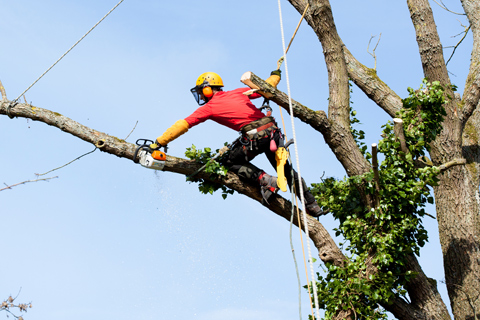
Your trees are constantly responding to environmental changes and throughout the year, they will need some help by way of pruning.
Tree pruning will help to improve the overall health of your trees, their overall appearance, and naturally reduces the possibility of tree failure. The improper pruning of a tree can stress a tree leading to potential decay, infestation, disease, and even death.
Below the arborist at 72 Tree, Seed & Land Co. discuss the different ways trees can be properly pruned.
Tree Height Reduction
When reducing the height of a tree, much care and precision pruning are necessary.
This procedure must be done correctly; “topping” or cutting through the main trunk often leads to several issues for the tree including failure.
Depending on the species and growth pattern of the tree, height reduction may not be possible without irreparably damaging the tree. In these cases, the choice to remove or relocate it may have to be made.
Tree Crown Raising
Crown raising involves the pruning, cutting, or removal of the lowest branches of a tree. This procedure provides more clearance under a tree for people and vehicles.
This procedure, when performed on younger trees, will encourage more growth in the upper branches. When raising the crown on older more developed trees, much caution is needed as the lower branches will be much larger and leave larger wounds.
Tree Crown Thinning
Crown thinning is a wise option for trees that sustain the full force of strong winds or have to bear the weight of accumulated snow or ice.
This is accomplished by the selective and careful removal of branches from within the crown. This process reduces the force of the wind on the canopy, as well as reducing the weight of snow and ice on the tree.
Care must be taken when thinning a crown. The improper procedure or over thinning can lead to disease, decay, infestation, or make the tree more susceptible to being blown over.
Tree Crown Cleaning
As the name suggests, crown cleaning is the removal of dead and dying branches. Crown cleaning is the more common of the pruning options.
This procedure helps to protect your tree by removing unnecessary weight, reduces the risk and hazard of falling branches, helps to halt the progression of decay and disease, thus improving the overall health of the tree.
Small or Ornamental Tree Pruning
Small or ornamental trees should be routinely pruned for many of the same reasons mentioned above. They may also be pruned for simple esthetics or to train them as they grow.
Professional Regular Pruning
Once aware of the signs your tree needs pruning, having your trees regularly pruned by a tree service or certified arborist will keep your trees healthy and beautiful. This will also benefit your landscape by the early detection of problematic infestations, fungi, or irregularities that may otherwise go unnoticed until it’s too late to correct.
An added benefit to regular pruning services is curb appeal. The better your landscape appears, the more curb appeal your property will have. This usually translates to a higher property value.
Overall, pruning is beneficial and necessary throughout the year. Follow these tree pruning tips, and visit our tree care blog more articles and information.
Notice: Undefined variable: page in /home/vrxdg1855sn3/public_html/wp-content/themes/72tree/content.php on line 15
Notice: Trying to get property 'ID' of non-object in /home/vrxdg1855sn3/public_html/wp-content/themes/72tree/content.php on line 15
Tree Pruning – Why, How & When to Prune Your Trees
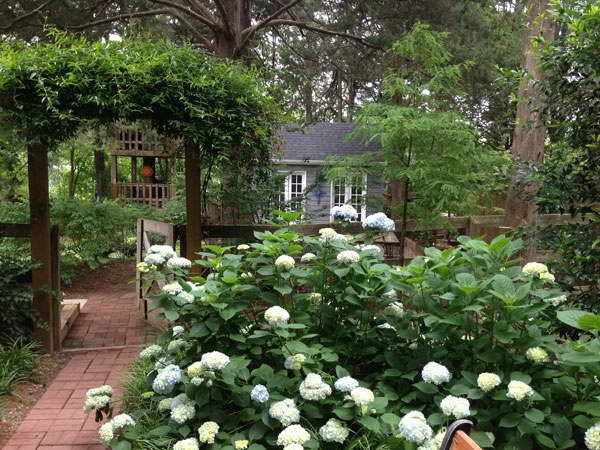 Tress help improve the overall look and value of your property, but they need to be pruned or trimmed regularly for various reasons. Often branches have to be cut off for public safety and equally important the tree’s health.
Tress help improve the overall look and value of your property, but they need to be pruned or trimmed regularly for various reasons. Often branches have to be cut off for public safety and equally important the tree’s health.
Tree Pruning – Why Do It?
There are many different reasons to prune a tree, the first being safety. Weather affected trees and dead branches fall often and should be removed to decrease liabilities. Another safety related reason to prune trees is to remove any visual traffic obstructions or low-hanging branches that people might walk into.
Trees should also be trimmed for building upkeep and preservation. Paint and even minor structural damage may occur from foliage and limbs rubbing, touching, or compromising a structures foundation. Also, insects and critters can use these as entry points and it may increase the occurrence of mosquitoes and insects in the environment.
A counterintuitive lesson is that trees should be trimmed to boost their development, growth and structure. Healthy trees generally have good foliage density but their interior is not overcrowded. Fruit trees usually undergo structural pruning; this process results in helping them cope with the additional weight of the fruits that are produced.
Aesthetics is another suitable reason to prune trees. Obviously, poorly maintained or unsightly trees remove from the beauty of a property, making it feel less hospitable. Trimming and pruning is a simple method to improve the visual appeal of a tree.
If a tree needs to be pruned because it poses a threat, it’s best to call an arborist or tree removal company. Since a main goal of trimming a tree is personal safety, it’s best to hire a tree professional to trim and properly inspect your trees for any damage, pests or disease.
The following are guidelines for when you need to call a tree professional:
• Trees near a utility line shouldn’t be pruned by anyone but a professional arborist; getting near power lines is too dangerous and risky, especially when falling limbs or trees are involved.
• Trees smaller in diameter aren’t as dangerous, but a local tree service should handle trees greater than 10cm.
*Note – An important consideration is whether your city or local municipality has a tree ordinance or permit process for pruning your trees. Check with your local arborist division so you avoid a potential citation or fine.
How to Prune – Types of Cuts
The two basic types of pruning or tree trimming cuts are thinning cuts and heading cuts. Thinning cuts remove limbs at the point of their origin or attachment. In other words, when a branch is pruned at the point it connects to another branch, or from the trunk, it’s called thinning. The benefits of tree thinning are less wind resistance, improved air circulation, and less crowding, which improves sunlight penetration.
Heading cuts on the other hand reduce a tree’s height. When performing heading cuts, or “topping” the tree, you are cutting lateral branches and any terminal branches. Heading cuts encourage growth of buds nearest to the cut. Heading cuts shouldn’t be used on branches older than a year so as to avoid stimulating suckers and water sprouts. Likewise, on older trees heading is also referred disfigures and leaves them susceptible to pests and disease. Topping is not an ideal method of pruning because long-term it may destroy a tree by making it susceptible to rot.
Insects and bacteria exist in every environment and can be disastrous to a tree. So it’s important to note that not pruning in warming months is the best way to avoid tree disease and insects from destroying a tree.
When to Prune – Trees and Shrubs
Knowing when to prune depends largely on your goal and objective to be achieved. As a good rule, the best time to prune is late winter to early spring, when the tree is dormant. Limb removal will not be as stressful to the trees since the tree is inactive.
Other reasons to prune at this time include: Wounds seal better, and reduction in pest infestation risk as diseases and insects are inactive. On the other hand, non-flowering shrubs can be pruned as the need arises to maintain or accomplish a specific shape. Flowering shrubs should be pruned as soon as they finish blooming.
Late spring and early summer is the worst possible time to trim trees as this is when leaves expand and the tree’s entire energy source is being put towards its new growth.
When pruning its best to leave the bottoms wider, which allows sun to get to the bottom of the shrub. This will prevent the shrub from excessively thinning out. Lastly, late summer pruning may encourage new growth. This is bad because it may not have sufficient time to harden and be ready in time for winter.
Pruning is critical to the health of your shrubs and trees. However, using the above measures can prevent stress and help your trees survive the cold season. Contact our tree inspection and tree care specialists for pruning, trimming or diagnosing your trees – (678) 223-5495.
